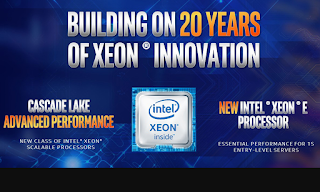SiTime Corporation introduced a MEMS-based precision timing solution for 5G infrastructure equipment.
The SiTime Emerald Platform is the first MEMS oven controlled oscillator (OCXO) in the industry and offers performance benchmarks significantly better that quartz-based timing solutions, along with key programmability features for systems OEMs.
SiTime said its MEMS OCXO is measurably more reliable than quartz-based OCXOs, which are extremely sensitive to environmental stressors such as vibration, temperature changes and shock. These environmental stressors can degrade network performance, reduce uptime, and impact mission-critical services such as advanced driver assistance systems (ADAS).

“Timing is potentially the single biggest point of failure in 5G systems and can impact performance, reliability, and revenue. 5G timing is a complex challenge for system OEMs, and requires a new approach beyond traditional, component-level methods that are in use today. To solve this, SiTime pioneered a systems approach with Emerald to help our customers achieve their highest level of performance and capability. By combining our revolutionary MEMS with programmable analog, innovative packaging and high-performance algorithms, we have created a solution that is up to 20 times better than what is currently available,” said Rajesh Vashist, CEO of SiTime.
“Our unique systems approach is driving SiTime’s success in 200 applications at 10,000 customers,” continued Vashist. “For example, our products are always programmable, which ensures 100% availability with short lead times. Our innovative temperature compensation algorithms, in conjunction with our MEMS and analog components, ensure that 5G equipment can be deployed anywhere, in any environment. In the future, we will continue to use our systems expertise to expand our leadership in the $1.5 billion networking and telecommunications timing market.”
In addition, legacy quartz OCXOs are custom built, from the ground up. There are severe limitations on the availability of features, such as frequencies, output types, operating temperature, and in-system control. SiTime’s Emerald Platform MEMS OCXOs do not have these limitations. Using a programmable analog architecture, the Emerald OCXO offers any frequency between 1 and 220 MHz, ensuring that the customer can select the optimal frequency for their application. The device also offers two output types, LVCMOS and clipped sine-wave, for optimal board performance. In the near future, the Emerald OCXO will also offer extended temperature operation (-40 to +95C, -40 to +105C) and an I2C serial interface for in-system programmability.
Highlights of the new Emerald Platform SiT5711 & SiT5712 OCXOs
(All comparisons are with quartz-based Stratum 3E OCXOs)
- 10 times better performance in the presence of airflow and thermal shock
ΔF/ΔT dynamic stability: ±50 ppt/°C typical (ppt = parts per trillion)
Allan deviation (ADEV): 2e-11 under airflow
- Unmatched ease-of-use
No restrictions on PCB placement
No mechanical shielding is required for thermal isolation
On-chip regulators, no need for external LDOs or ferrite beads
Resistant to humidity
- Size: 9 x 7 mm, 75% smaller. Adapter boards are available to match common OCXO footprints
Height: 6.5 mm, 40% thinner, eliminates obstruction in a chassis-based system
- 20 times better vibration resistance, ideal for outdoor pole mounted equipment
Resistant to microphonic and/or board bending effects, ideal for large telecom PCBs
Supports -40 to +85°C temperature range today, -40 to +95°C and -40 to +105°C support available in the near future
- The only programmable OCXO platform, supports any frequency up to 220 MHz and LVCMOS / clipped sine-wave outputs
- Semiconductor-level quality and reliability, batch to batch consistency
- No activity dips
Sampling is underway and production quantities are expected in Q2 2019.
http://www.sitime.com


















